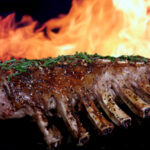Slings give added protection and support to someone who has already been treated for an injury to the ribs, chest, hand or arm. If an arm is bandaged, check that the fingernails are not blue; if they are, loosen the bandage before fitting the sling.
Slings are normally made from a triangular bandage but you can use any material about 1m square, either folded or cut diagonally.
Arm sling
Use a conventional arm sling for a wounded arm and for some rib injuries. It works only if the casualty can stand or sit.
Get the casualty to support the injured arm with the other hand. Place the bandage between the chest and forearm – its point stretching well beyond the elbow. Take the upper end over the shoulder on the uninjured side, and round the neck to the injured side.
Take the lower end of the bandage up over the hand and forearm and tie the ends with a reef knot.
Pin the point near the elbow, or twist and tuck it in.
Elevation sling
Use this type if a hand must be raised to control bleeding, if a collarbone has been broken or if there are complicated chest injuries. It will also support the arm of a casualty who cannot stand or sit, and provides extra support if a rough journey has to be taken.
Raise the injured arm -or the arm on the injured side in the case of a chest injury – so that the hand rests on the opposite shoulder.
Put one end of the bandage over the casualty’s shoulder on the uninjured side, letting the rest hang over the injured arm with the point extending beyond the elbow.
Gently push the base of the triangle under the arm and take the other end of the bandage round the casualty’s back on the injured side. Tie the ends together at the shoulder on the uninjured side.
Fold the point of the sling at the elbow and fasten it with a pin, or instead twist and tuck it in.
Improvised slings
Improvise a sling if you do not have a triangular bandage and you cannot make one. A sling can be made from a belt, tie, scarf or roller bandage.
Wrap or loop the improvised sling round the casualty’s wrist on the injured side of the body.
Put one end of the sling over the shoulder on the uninjured side. Then take the other end round the neck.
Tie the ends in the hollow above the collarbone on the uninjured side. The casualty’s hand should usually be just above elbow level – but at shoulder level for forearm or hand wounds.
Alternatively, if you have a large pin, turn up the bottom edge of the casualty’s jacket and pin it firmly to the jacket at chest level. The arm will then be well supported inside the fold.
Or, his hand can be pushed inside the fastened jacket at chest level, supported by a button or zip.





